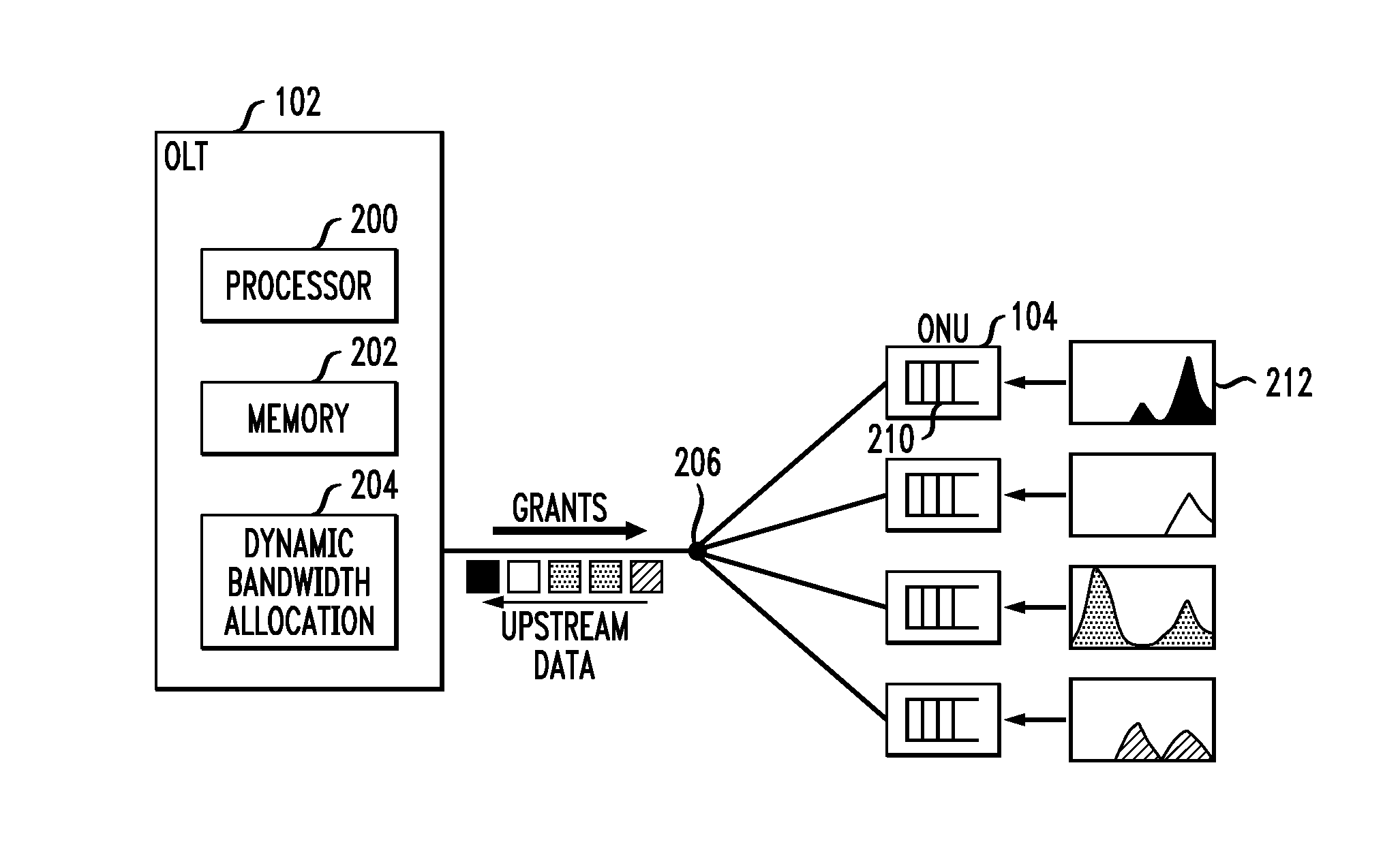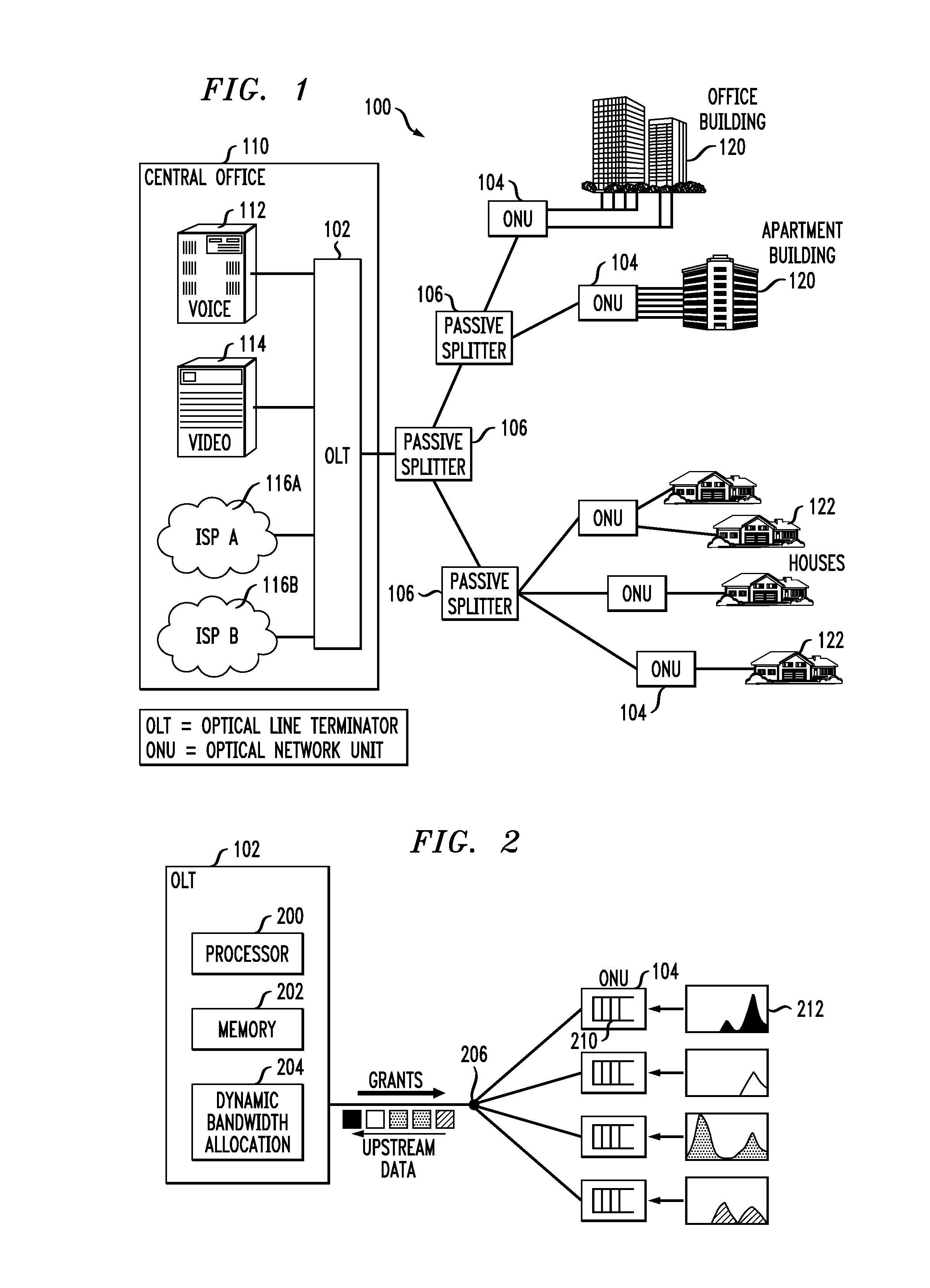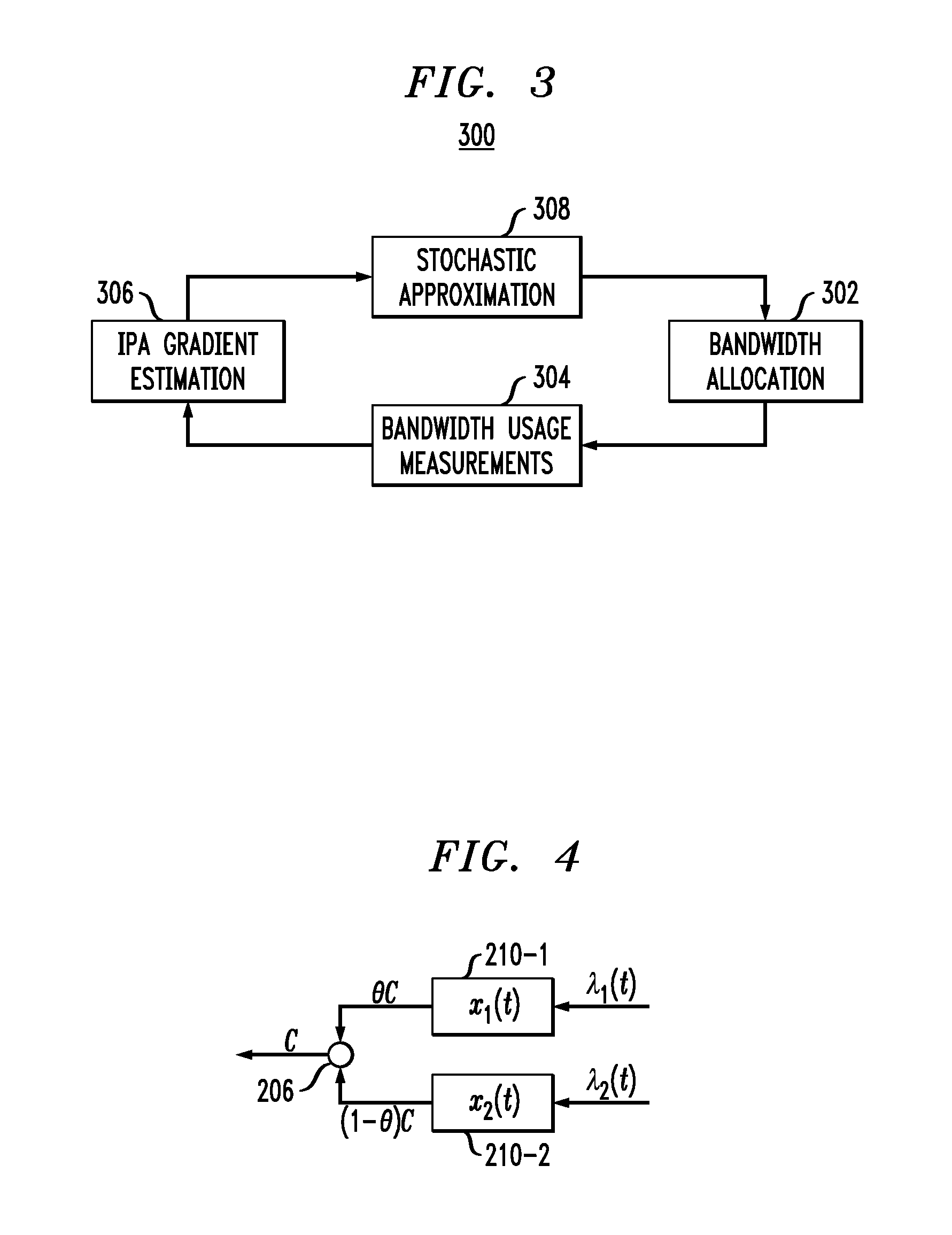Allocating upstream bandwidth in an optical communication network
a technology of optical communication network and upstream bandwidth, applied in the field of upstream bandwidth allocation techniques, can solve the problems of significant increase in cost and complexity of onus, unfair or inadequate distribution of available bandwidth among customers, and each customer may only have a very limited bandwidth available, etc., to facilitate the dynamic allocation of available upstream bandwidth
- Summary
- Abstract
- Description
- Claims
- Application Information
AI Technical Summary
Benefits of technology
Problems solved by technology
Method used
Image
Examples
Embodiment Construction
[0015]The invention will be illustrated herein in conjunction with illustrative embodiments of communication networks and associated dynamic bandwidth allocation techniques. It should be understood, however, that the invention is not limited to use with the particular networks and techniques described, but is instead more generally applicable to any network bandwidth allocation application in which it is desirable to avoid the need for status reports or other similar communications from end user equipment.
[0016]FIG. 1 shows an illustrative embodiment of a communication network in the form of a GPON 100 comprising an OLT 102 and multiple ONUs 104. The OLT is coupled to the ONUs via optical elements comprising splitters 106. The splitters 106 may comprise, for example, passive optical intensity or wavelength splitters, or other types of optical signal distribution elements, in any combination. The OLT in this embodiment is associated with a central office 110 that includes voice switc...
PUM
 Login to View More
Login to View More Abstract
Description
Claims
Application Information
 Login to View More
Login to View More - R&D
- Intellectual Property
- Life Sciences
- Materials
- Tech Scout
- Unparalleled Data Quality
- Higher Quality Content
- 60% Fewer Hallucinations
Browse by: Latest US Patents, China's latest patents, Technical Efficacy Thesaurus, Application Domain, Technology Topic, Popular Technical Reports.
© 2025 PatSnap. All rights reserved.Legal|Privacy policy|Modern Slavery Act Transparency Statement|Sitemap|About US| Contact US: help@patsnap.com



